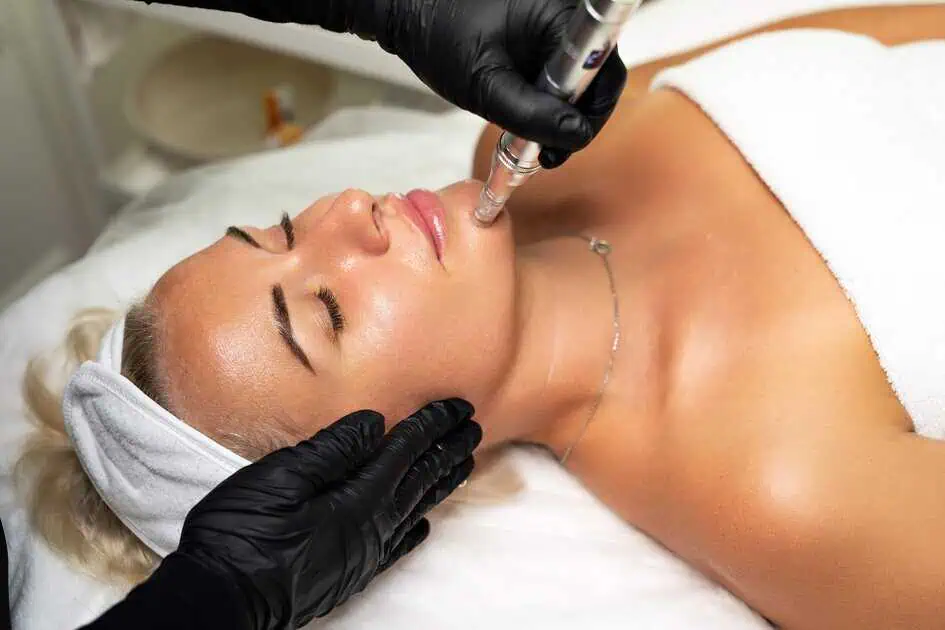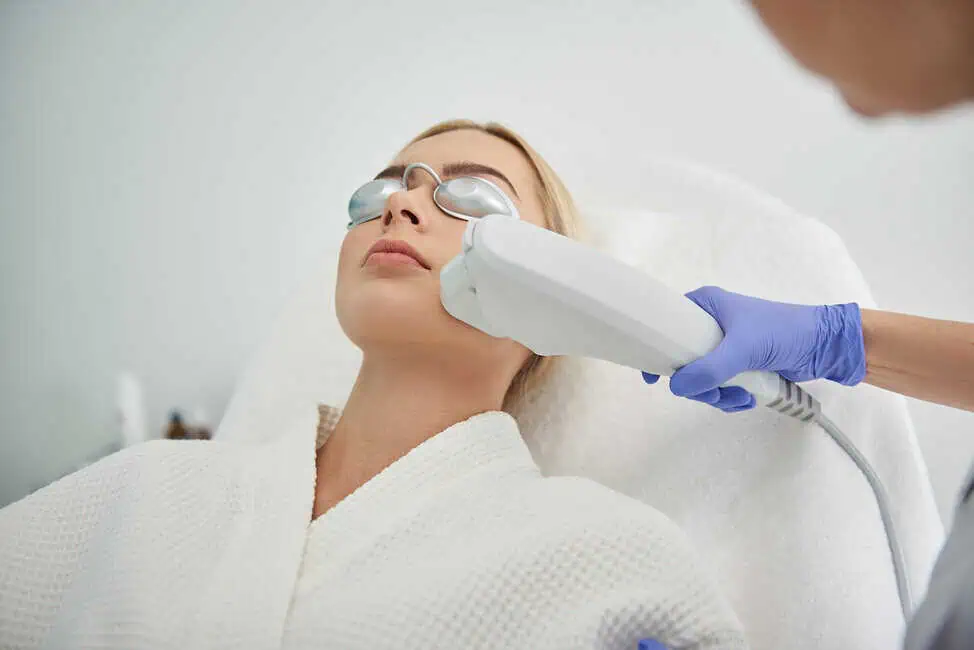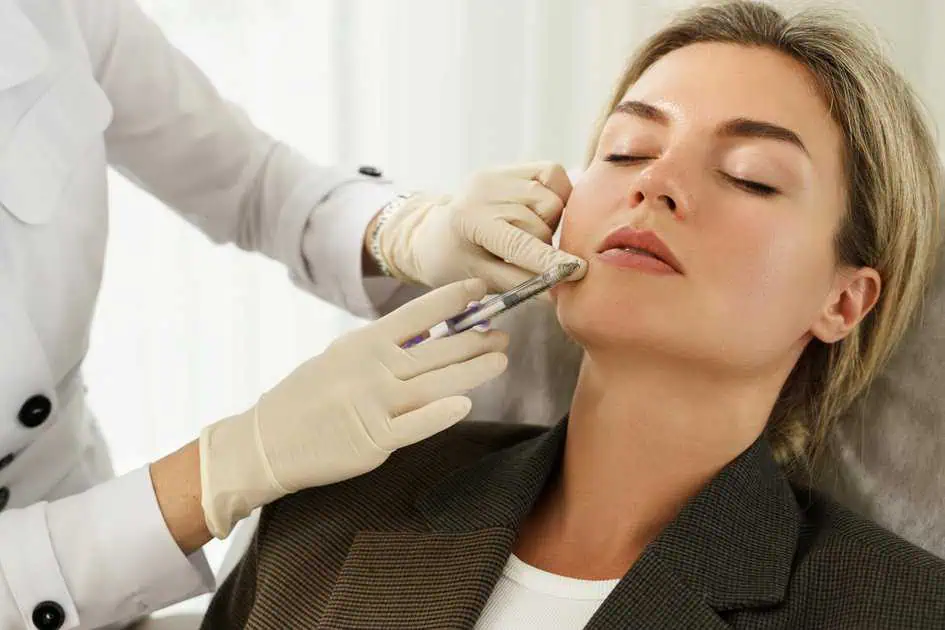Table of Contents
Acne scars can be a persistent reminder of past skin troubles, affecting our physical appearance and self-confidence. Fortunately, various treatments, such as chemical peels, have emerged to address this issue. Chemical peels apply chemical solutions to the skin, exfoliating the top layers and promoting skin regeneration.
In this article, we delve into personal experiences and insights regarding the effectiveness of chemical peels for acne scars on the face.
What are Chemical Peels?
Chemical peels for acne scars on the face are popular cosmetic procedures used to improve the appearance of unwanted acne scars and enhance the texture and tone of your overall skin. This non-invasive treatment involves applications of chemical solutions to the skin, which exfoliates the outermost layers, revealing fresher, healthier skin beneath.
Acne scars can be frustrating and make most individuals self-conscious. They can result from severe acne breakouts that cause damage to the skin’s deeper layers, including the dermis. These scars manifest as raised or depressed areas, discoloration, or uneven facial texture.
Chemical peels work their magic by inducing controlled injury to the skin, stimulating the natural healing process, and promoting the growth of new, healthier skin cells. The chemical solution used in the peel contains one or more exfoliating agents, such as alpha hydroxy acids (AHAs), beta hydroxy acids (BHAs), or trichloroacetic acid (TCA). The specific type and concentration of the solution used depend on the severity of the acne scars and the individual’s skin type.
The skin is thoroughly cleansed during the procedure, and the chemical solution is carefully applied to the face. The answer is greatly based on the skin for predetermined amounts of time, which can vary based on the desired depth of the chemical peel and the individual’s tolerance. The solution causes the outer layers of the skin to peel off, revealing fresh skin with reduced scarring and improved texture.
The depth of the peel can be categorized into three levels: superficial, medium, and deep. Superficial peels primarily target the outermost layer of the skin (epidermis) and are effective for mild acne scars and surface discoloration. Medium peels penetrate deeper into the skin, targeting the epidermis and upper dermis, making them suitable for moderate acne scars. Deep peels reach the lower dermis, targeting severe acne scars; however, they require more downtime and may not be perfect for most, if not all, skin types.
Chemical peels for acne scars offer several benefits. They help diminish the appearance of scars by stimulating collagen production, which improves the skin’s elasticity and thickness. The exfoliation process also helps to unclog pores, reducing the likelihood of future breakouts. In addition to addressing acne scars, chemical peels can enhance the unwanted appearance of fine lines, wrinkles, sun damage, and uneven pigmentation.
After the peel, the treated skin will be temporarily more sensitive to sunlight and appear red or swollen. It is essential to follow post-peel instructions provided by the dermatologist or aesthetician, such as avoiding sun exposure, applying sunscreen, and using gentle skincare products. The recovery time varies depending on the depth of the peel, ranging from a few days for superficial peels to several weeks for deep peels.
While chemical peels can be an effective treatment for undesirable acne scars, it is essential to remember that results greatly vary based on the individual and the severity of the scarring. Multiple treatment sessions may be recommended to achieve the desired outcome, and maintenance treatments may be necessary to sustain the results over time.
Ask and consult with qualified dermatologists or skin care professionals before undergoing a chemical peel for acne scars. They will evaluate your skin type, assess the severity of your scars, and recommend the most appropriate type and depth of peel for your specific needs. Doing so can ensure the procedure is performed safely and effectively, helping you achieve smoother, healthier-looking skin.
Understanding Chemical Peels
Chemical peels can be categorized into three types: superficial, medium, and deep. Superficial peels mainly target the outermost layer of the skin (epidermis) and are suitable for mild acne scars. Medium peels penetrate deeper into the middle layers (dermis), while deep peels provide the most intense exfoliation and are recommended for severe acne scars. The choice of peel depends on the severity of the scars and the individual’s skin type.
Experiences with Chemical Peels for Acne Scars
Mild to Moderate Acne Scars:
For individuals with mild to moderate acne scars, superficial chemical peels have shown promising results. Many individuals have reported a noticeable improvement in skin texture, reduction in scar visibility, and overall skin rejuvenation. Although, remember to take into account that multiple sessions may be essential to achieve optimal results. Some users have reported experiencing mild redness, dryness, and peeling immediately after the procedure, but these after-effects are usually temporary and subside within a few days.
Moderate to Severe Acne Scars:
Medium and deep chemical peels are often recommended for individuals with moderate to severe acne scars. These chemical peels target more deep layers of the skin, stimulating collagen production and promoting significant skin rejuvenation. However, it is crucial to consult a dermatologist or a skincare professional before opting for these stronger peels, as they may require more downtime and have higher risks of potential side effects. The recovery period for deeper peels can range from a few weeks to several months.
Factors Influencing Results
The effectiveness of chemical peels for acne scars can vary depending on several factors:
- Skin Type: Several skin types react differently to chemical peels. It is essential to consider skin sensitivity, pigmentation, and the potential for hyperpigmentation or hypopigmentation when determining the most suitable peel for an individual.
- Scar Severity: The depth and severity of acne scars play a crucial role in determining the success of chemical peels. Superficial scars respond better to milder peels, while deeper scars may require more necessary or additional treatments.
- Professional Expertise: Consulting a qualified dermatologist or skincare professional is vital for assessing the specific needs of an individual’s skin and determining the most appropriate type and strength of the chemical peel.
Final Thoughts on Chemical Peels
Chemical peels have emerged as a valuable option for addressing acne scars on the face. Mild to moderate acne scars often respond well to superficial peels, while more severe scars may require medium or deep peels for optimal results. Nonetheless, it is essential to approach chemical peels cautiously and be under the guidance of a professional, as the effectiveness and potential side effects can vary based on individual factors. By understanding chemical peels’ potential benefits and limitations, individuals can make informed decisions and achieve smoother, rejuvenated skin, ultimately boosting their self-confidence and well-being.
Remember, before undergoing any skin treatment, it is advisable to consult a dermatologist or skin care professional to receive personalized advice based on your unique skin condition.
Do you want to experience chemical peels? Our wonderful friends at Modern Looks Med Spa can help you today. Visit them now!







